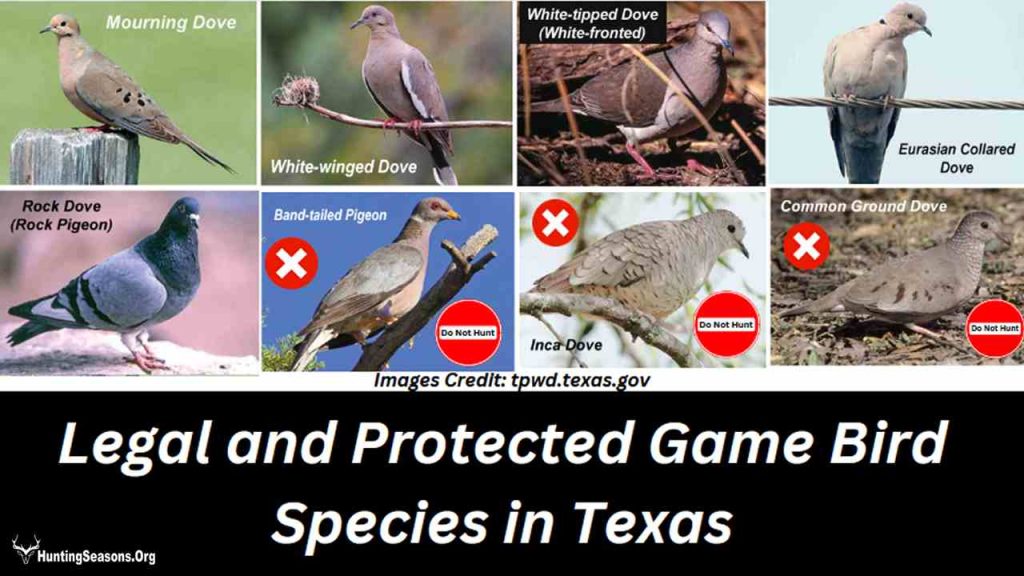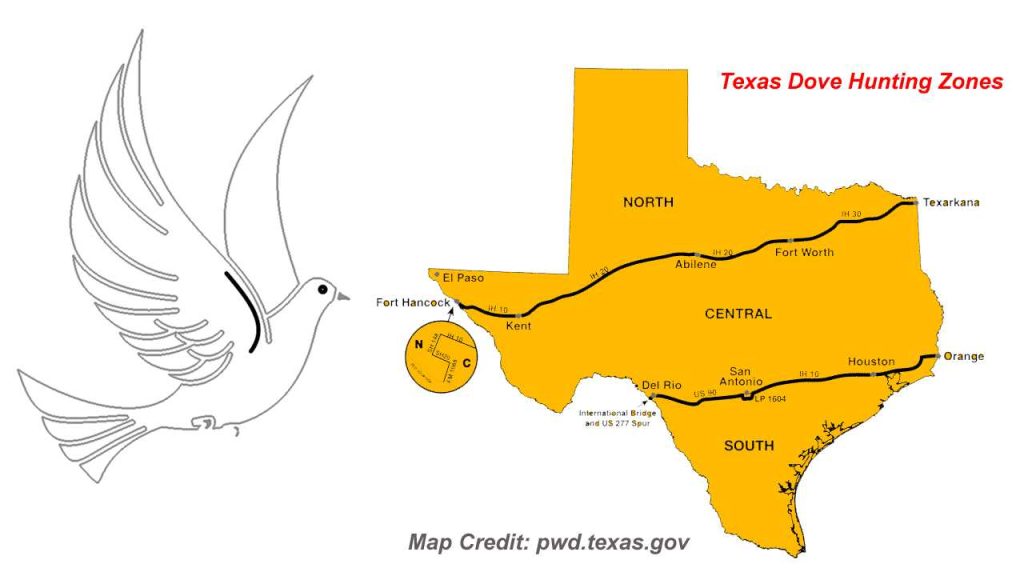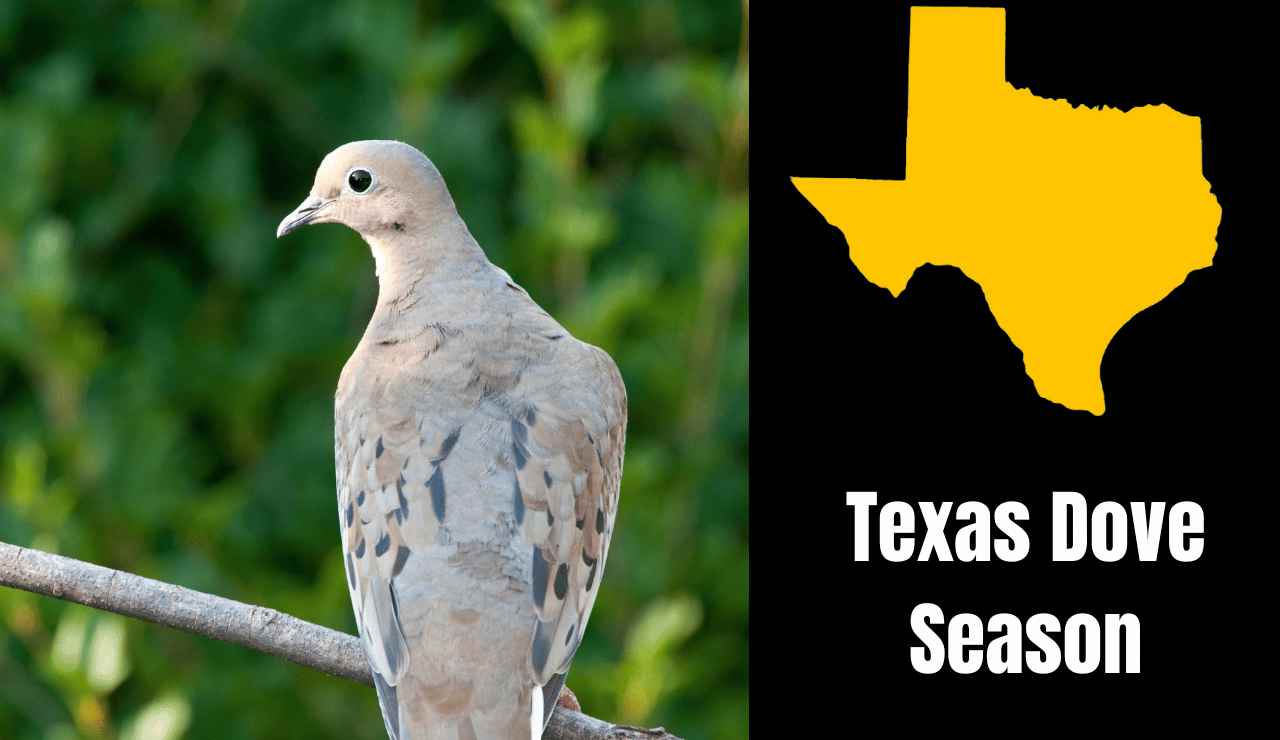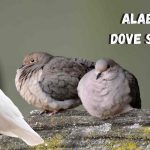Texas Dove season includes Regular and Youth-Only. The Regular period runs September–November with a December extension. It lasts throughout January in the South. In September, Central and South Zones celebrate six Special White-Winged Dove Days. Youth-Only occurs in late October in North and South Zones.
This page covers Texas Parks and Wildlife Department’s dove hunting rules and laws, including details on permissible shooting birds in the state.
Texas Dove Season
Latest pigeon game provides distinctive schedules for North, Central, and South shooting zones, according to TPWD. Hunters must register, obtain a migratory bird certification, and follow daily load limitations.
Regular
| Games | Start Dates | End Dates | Zones/Location |
|---|---|---|---|
| Regular – North | September 01 | November 10 | North Zone |
| December 20 | January 7 | ||
| Regular – Central | September 01, | October 27 | Central Zone |
| December 13 | January 14 | ||
| Regular – South | September 14 | October 27 | South Zone |
| December 13 | January 21 |
Special White-winged
Start Dates | End Dates | Zones/Location | |
|---|---|---|---|
| Special White-winged Dove Days – South | September 01 | September 02 | South Zone |
| September 06 | September 8 & Sep. 13, 2024 |
Falconry
Start Dates | End Dates | |
|---|---|---|
| Dove Falconry Season | November 17 | December 03 |
Bag Limit
| Dove Season | Daily Bag Limit | Possession Limit |
|---|---|---|
| Regular Season | 15 white-winged, mourning, and white-tipped doves (aggregate), no more than 2 white-tipped | 3 times the daily bag limit |
| Special White-winged Dove Days | 15 white-winged, mourning, and white-tipped doves (aggregate), no more than 2 mourning and 2 white-tipped | 3 times the daily bag limit |
| Falconry Season | 3 in the aggregate | 3 times the daily bag limit |
Texas Legal & Protected hunting bird types

| Species | Description | Hunting Status |
|---|---|---|
| Mourning Dove | Brown with black spots on wing, pointed tail | Legal throughout Texas |
| White-winged Dove | White bar on wing, rounded tail | Legal in South Texas, increasing statewide |
| White-tipped Dove | Rust-colored wing linings, rounded tail | Legal in South Texas |
| Eurasian Collared-Dove | Pale gray body, black bill, narrow black collar on nape of neck | Unprotected |
| Rock Dove | Gray, brown or white, plump body, small head | Unprotected |
| Band-tailed Pigeon | Yellow bill, white band on neck | Protected - Do Not Hunt |
| Inca Dove | Scaly-looking, small, brown body | Protected - Do Not Hunt |
| Common Ground Dove | Sandy brown color, dark spots on wings, short round tail, short thin bill | Protected - Do Not Hunt |
Dove Regulations
- Anyone wanting to pursue migrating game birds must have a hunting license.
- Hunting license purchases require hunters to declare their purpose for migrating game birds and provide basic information to become HIP certified and qualified to hunt such birds.
- Hunters in Texas must possess a migrating Game Bird Stamp Endorsement to pursue migrating game birds like doves legally.
- A shooter should notify birds with leg bands by going to the website reportband.gov.
Dove Licenses
| License Type | Cost (Resident) | Cost (Non-Resident) |
|---|---|---|
| Annual License | $47 | $315 |
| One-Day License | $7 | $47 |
Other related license
| License/Permit | Resident Fee | Non-Resident Fee |
|---|---|---|
| Resident Hunting License (Type 101) | $25 | - |
| Resident Migratory Game Bird Endorsement | $7 | $25 |
| Youth Hunting License (ages 17 and under) | $7 | $25 |
| Senior Resident Hunting License (ages 65 and over) | $15 | $50 |
| Non-Resident Hunting License (Type 100) | - | $100 |
| Resident Combo License | $40 | $150 |
| Annual Public Hunting (APH) Permit | $48 | - |
| Federal Duck Stamp | - | $25 |
| Upland Game Bird Endorsement | $5 | - |
Locations & Dove Zones
The state has three dove hunting zones: North, Middle, and South. Each zone, covering different regions, has varying dates and weight restrictions for the season. The South Zone is widely considered the best for dove. Hunters can use the TPWD shooting zones chart to determine their zone and plan accordingly. The Texas Public Hunting Map helps locate public shooting areas.

Central Zone
| The region of the state that lies between the North and South Zones |
North Zone
| Starting point | International Bridge south of Fort Hancock |
|---|---|
| North boundary | FM 1088 |
| West boundary | State Highway 20 |
| North boundary | State Highway 148 |
| North boundary | Interstate Highway 10 at Fort Hancock |
| East boundary | Interstate Highway 10 |
| Northeast boundary | Interstate Highway 20 |
| Northeast boundary | Interstate Highway 30 at Fort Worth |
| Ending point | Texas-Arkansas state line |
South Zone
| Starting Point | End Point |
|---|---|
| International Toll Bridge in Del Rio | U.S. Highway 277 Spur in Del Rio |
| U.S. Highway 277 Spur in Del Rio | U.S. Highway 90 in Del Rio |
| U.S. Highway 90 in Del Rio | State Loop 1604 |
| State Loop 1604 | Interstate Highway 10 |
| Interstate Highway 10 | Texas-Louisiana Line |
FAQ
When is the regular dove season in Texas?
It continues in the North Zone from September 1 to November 13 and then restarts on December 17 until January 1, 2023. It continues in the Central Zone from September 1 to October 30 and then restarts on December 17 until January 15, 2023. It continues in the South Zone from September 14 to October 30 and then returns on December 17 until January 22, 2023.
What are the bag limits for dove hunting in Texas?
A daily bag restriction in Texas of 15 birds per day, of which no more than two may be white-tipped, white-winged, or mourning doves.
Are there any special dove hunting days in Texas?
Yes, Texas will have six Special White-Winged Days from September 2-4 and September 01–13, 2024. Only white-winged doves may be taken during these times, and a daily weight restriction of 15 birds is imposed.
What is the bag limit for common pigeons (rock doves) in Texas?
Texas has no weight limits or restricted seasons for shooting common pigeons (also known as rock doves). To help identify, it is advised to leave the birds’ feathers intact.
- New Jersey Hunting Seasons 2024 New Dates & Regulations - September 15, 2024
- Delaware Hunting & Trapping Seasons Summary 2024 - September 4, 2024
- 2024-2025 Colorado Hunting: New Big Game Season Dates! - August 28, 2024





